We had the good fortune this summer to work remotely with the TRAYLS group out of Hoonah, Alaska. 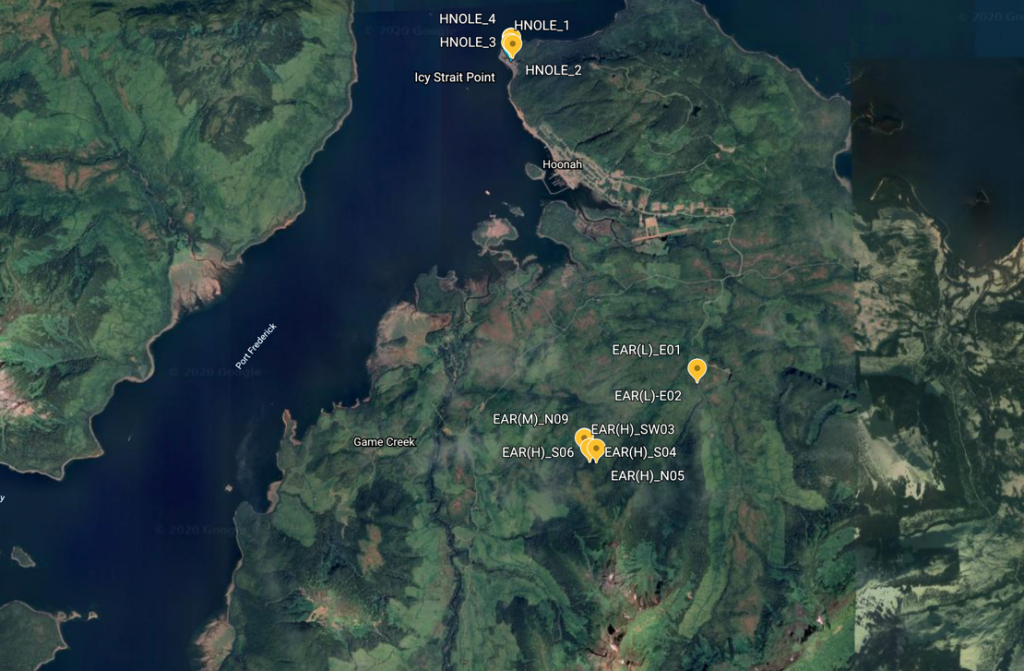
Figure 1. Google Earth map showing the location of the town of Hoonah and the coring sites. Two tree ring sites were sampled by the group the HN site in the town and the EAR site on Ear Mountain.
Arianna Lapke lead a group of four participants through an ambitious set of projects over much of the summer. Our collaboration with the group centered on meeting virtually with the group to describe the utility and sampling of trees for dendroclimate information. Below are the results of their sampling on EAR Mountain, Chicagof Island and our lab work at the Wooster Tree Ring Lab.
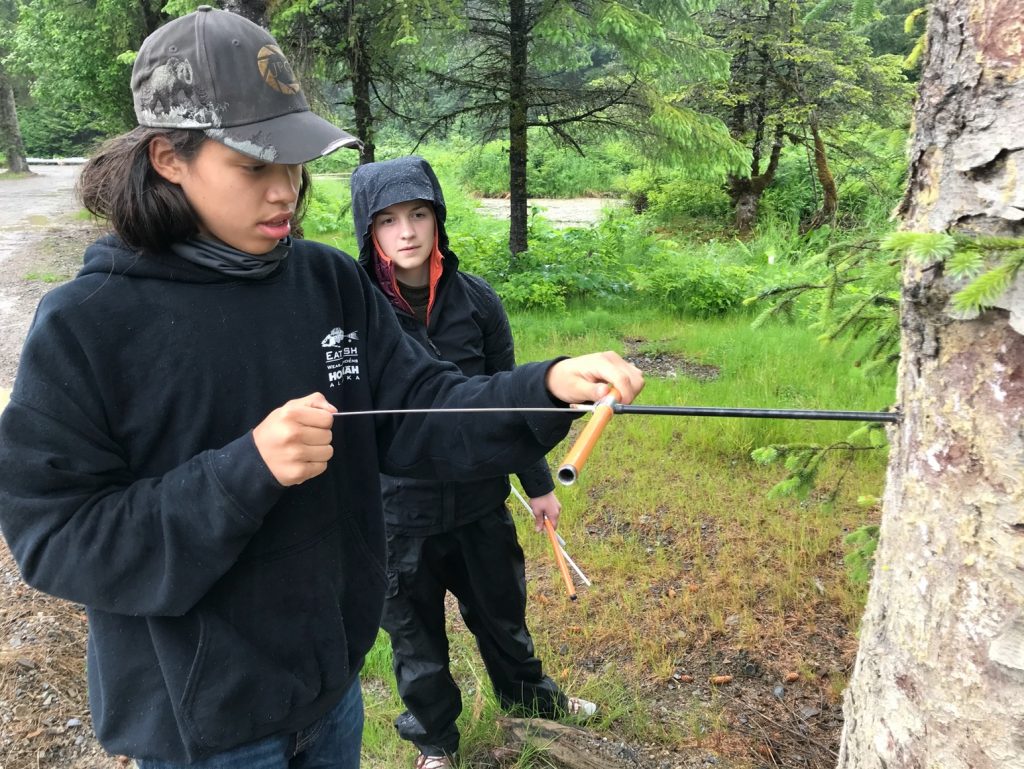 The group shown coring a Sika spruce just outside of town.
The group shown coring a Sika spruce just outside of town.
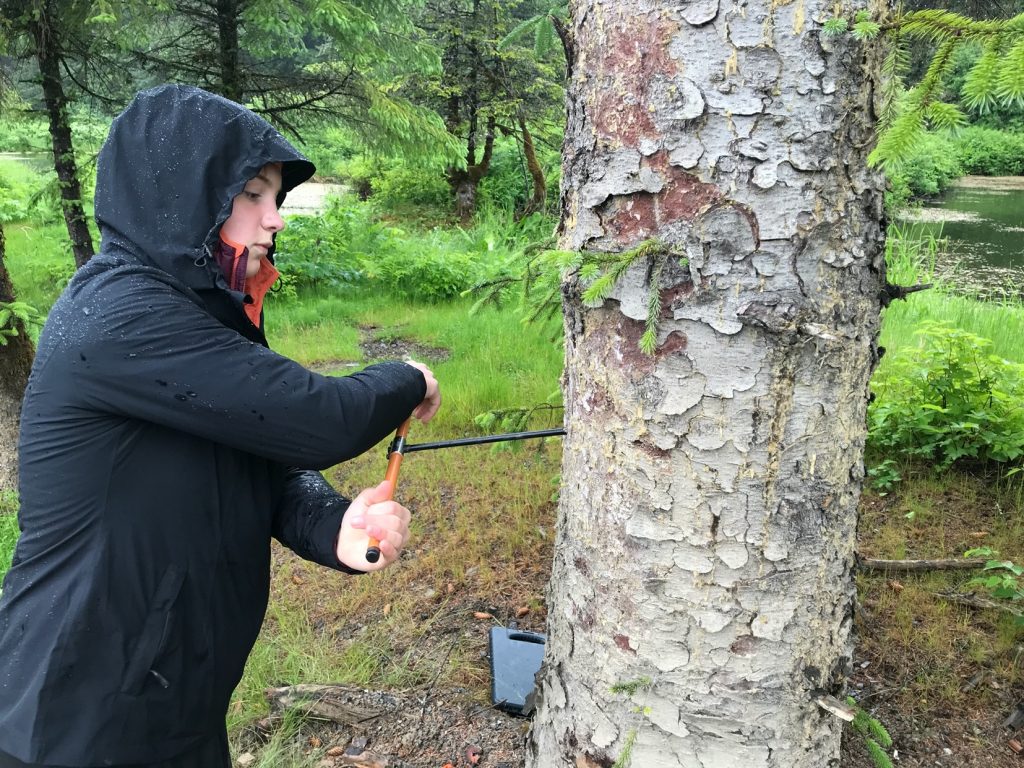 More coring – this time in the rain.
More coring – this time in the rain.
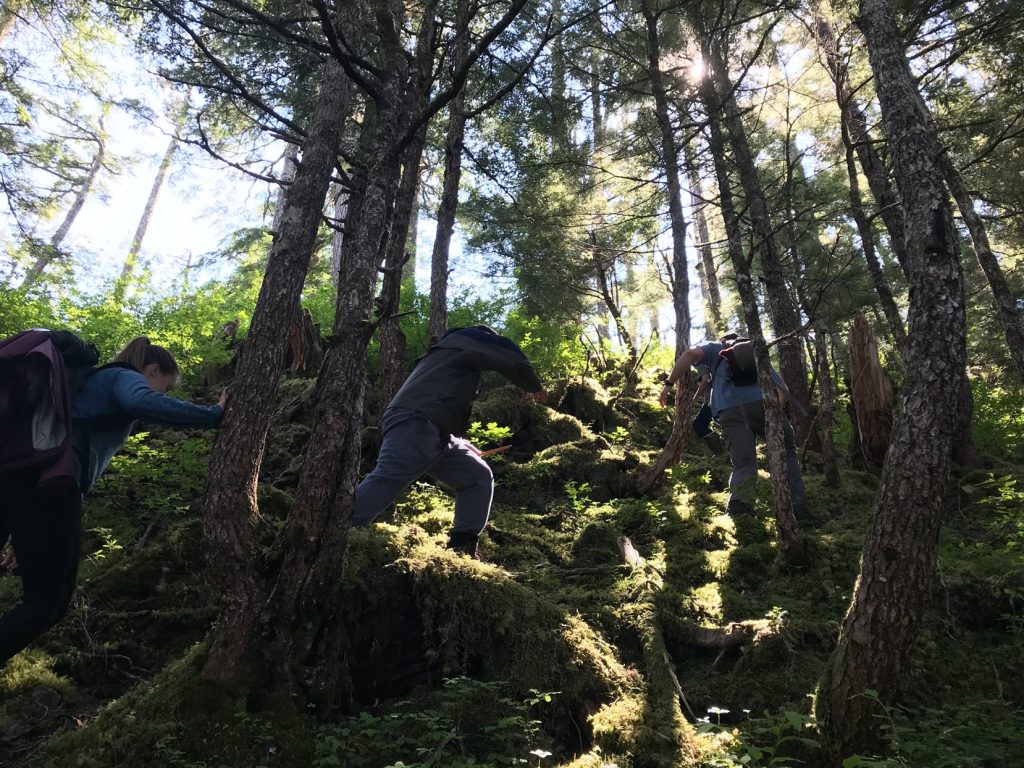 The steep climb up the flank of Ear Mountain to find the old Mountain Hemlocks.
The steep climb up the flank of Ear Mountain to find the old Mountain Hemlocks.
 Comparisons of the fast growing Sitka Spruce and the slow growth of the higher elevation Mountain Hemlock.
Comparisons of the fast growing Sitka Spruce and the slow growth of the higher elevation Mountain Hemlock.
 The cores from the hemlock some over 400 years old show lots of stress , clinging to the mountain side and battered by storms. They are also showing a possible drop in ring-width over time
The cores from the hemlock some over 400 years old show lots of stress , clinging to the mountain side and battered by storms. They are also showing a possible drop in ring-width over time
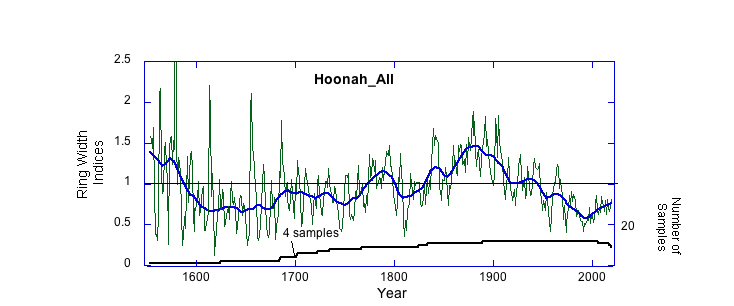 So we measured the ring-widths (Nick Wiesenberg and Melita Wiles did) and then we compiled the ring-width data into a chronology above. This chronology is the full record going back into the 16th century
So we measured the ring-widths (Nick Wiesenberg and Melita Wiles did) and then we compiled the ring-width data into a chronology above. This chronology is the full record going back into the 16th century
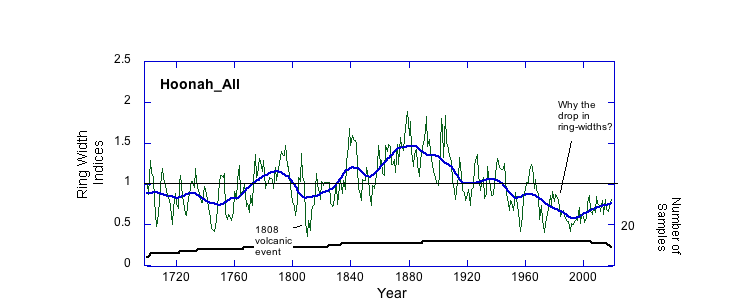 This chronology is truncated at 1720 or so when we had at least 4 samples. The most narrow rings follow the 1808 unknown eruption that cooled much of the region – it is unknown as no one knows where the volcano that erupted is located – it is recognized in ice cores. The other intriguing feature is the relatively recent (last 50 year) drop in ring widths. It may be due to increased evapotranspiration demands with increasing summer minimum temperatures. There is a correlation of -0.39 (p<0.04) between tree growth and average April-August minimum temperatures. Other studies have shown that warming night time temperatures lead to increased respiration at night and along with possible greater ET demand or increased cloudiness during the day there may be a decrease in photosynthesis leading to decreased carbon uptake (Sullivan et al., 2015). Interestingly, tthe work of Mazvita Chikomo done this summer as part of the AMRE project, discovered some pretty strong negative correlations between Mt. Hemlock growth and minimum monthly temperature records in Prince William Sound – perhaps there is a link? This is a promising line of research to further investigate the health of Mt. Hemlock in the region and it is something we plan to pursue with more samples in the future.
This chronology is truncated at 1720 or so when we had at least 4 samples. The most narrow rings follow the 1808 unknown eruption that cooled much of the region – it is unknown as no one knows where the volcano that erupted is located – it is recognized in ice cores. The other intriguing feature is the relatively recent (last 50 year) drop in ring widths. It may be due to increased evapotranspiration demands with increasing summer minimum temperatures. There is a correlation of -0.39 (p<0.04) between tree growth and average April-August minimum temperatures. Other studies have shown that warming night time temperatures lead to increased respiration at night and along with possible greater ET demand or increased cloudiness during the day there may be a decrease in photosynthesis leading to decreased carbon uptake (Sullivan et al., 2015). Interestingly, tthe work of Mazvita Chikomo done this summer as part of the AMRE project, discovered some pretty strong negative correlations between Mt. Hemlock growth and minimum monthly temperature records in Prince William Sound – perhaps there is a link? This is a promising line of research to further investigate the health of Mt. Hemlock in the region and it is something we plan to pursue with more samples in the future.
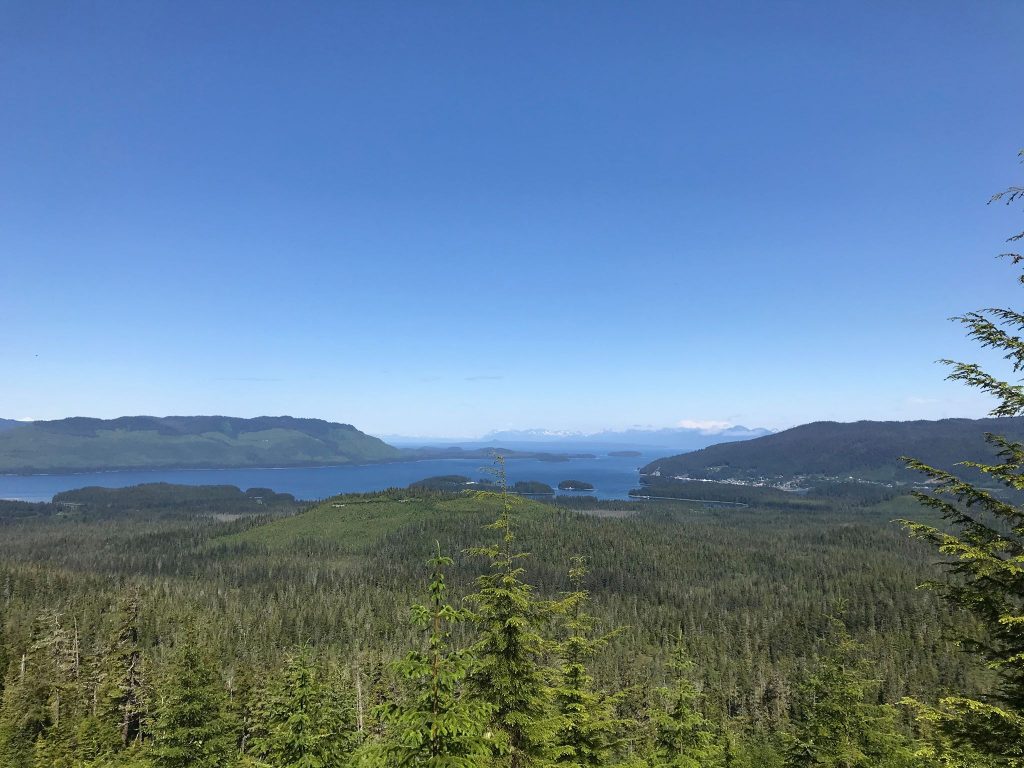
Reference cited:
Sullivan, P. F., Mulvey, R. L., Brownlee, A. H., Barrett, T. M., & Pattinson, R. R. (2015). Warm summer nights and the growth decline of shore pine in Southeast Alaska. Environmental Research Letters, 10 124007.
Acknowledgements: We thank Arianna Lapke and the TRAYLS group and look forward to future work with them. This work was supported by the Sherman-Fairchild Foundation, The Luce Funds and the National Science Foundation. NSF Grant AGS 8001184 supported Julia Pearson, Claire Cerne, Ben Gaglioti and Greg Wiles. We also acknowledge the contributions of AMRE participants – Mazvita Chikomo, Srushti Chaudhari and Fred Whenshuo.



Nice example of good science and teaching during a pandemic!